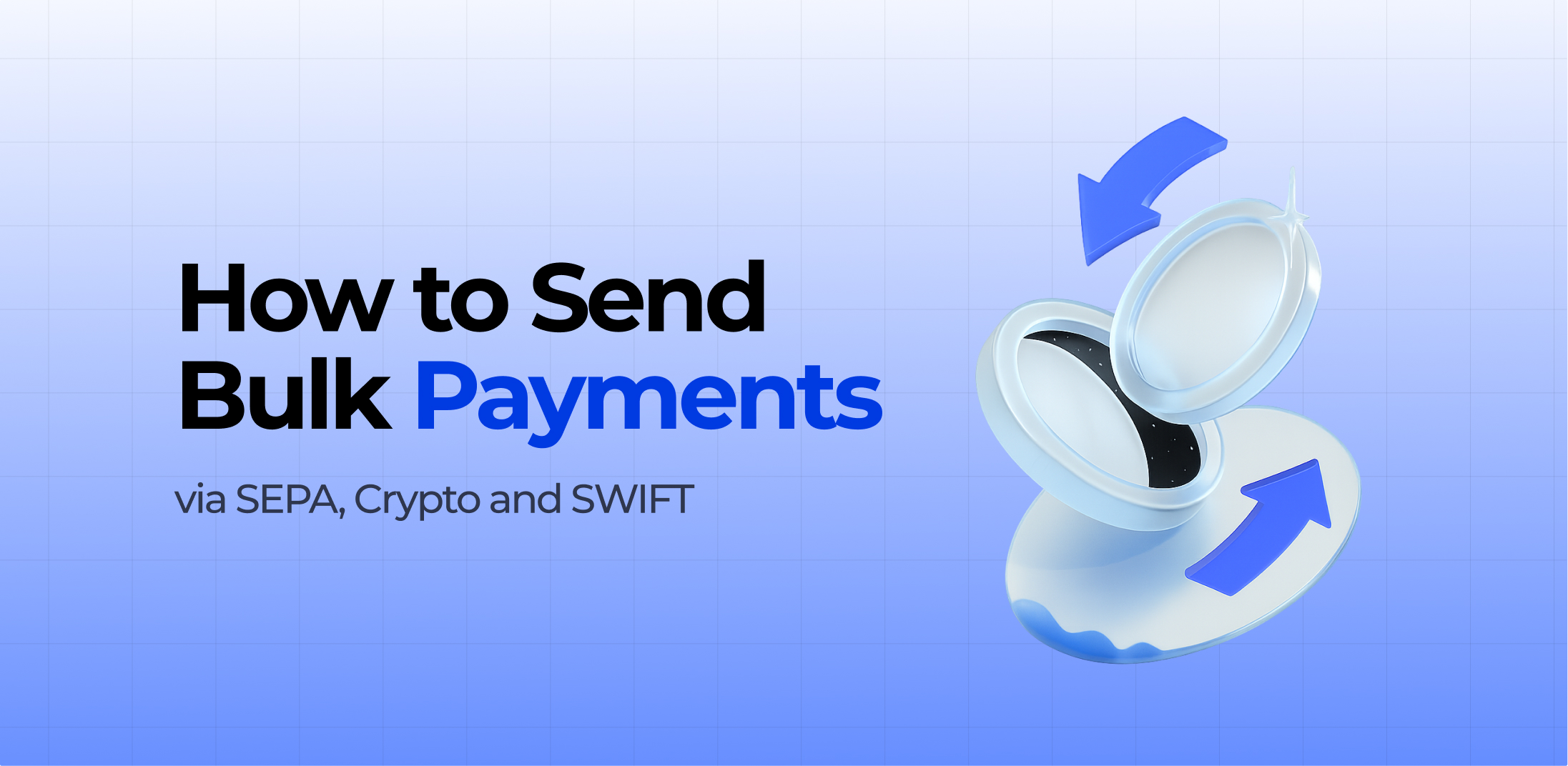If you’re sending money within Europe, it’s important to understand how long does a SEPA payment takes to avoid potential delays especially when the timing of your transfer matters. SEPA, which stands for the Single Euro Payments Area, is a European Union system designed to simplify and streamline euro bank transfers between participating countries.
This includes not only all EU member states but also countries like Norway, Iceland, and Switzerland. Whether you’re a company handling payments to suppliers or an individual transferring money to loved ones, being aware of SEPA processing times is key. The system is favored for its efficiency, low fees, and harmonized rules that apply across borders.
In this article, we’ll break down the timing expectations for different SEPA payment methods—such as SEPA Credit Transfers, Instant Payments, and Direct Debits. You’ll also learn what factors can influence the speed of your transfer. By the end, you’ll have a clear and practical understanding of the SEPA process and how to make your euro transfers faster and smoother.
What Is a SEPA Payment?
A SEPA payment is a euro bank transfer carried out within the Single Euro Payments Area (SEPA). It is a European Union project aimed at harmonizing electronic payments across Europe. The core objective of SEPA is to streamline cross-border transfers.
It makes them just as convenient and efficient as domestic ones. The SEPA network includes all EU countries, as well as several others like Switzerland, Iceland, Norway, Liechtenstein, and, in some instances, the United Kingdom. SEPA offers different types of payment methods to suit various transaction needs:
- SEPA Credit Transfer (SCT). A standard bank transfer in euros that typically reaches the recipient within one working day.
- SEPA Instant Credit Transfer (SCT Inst). A rapid payment solution allowing euro transfers to be completed in seconds, around the clock, even on weekends and holidays.
- SEPA Direct Debit (SDD Core). Commonly used for automatic consumer payments like subscription services and utility bills.
- SEPA Direct Debit (SDD B2B). Tailored for business-to-business payments, this version enforces stricter controls and excludes refund options.
The advantages of the SEPA system are significant for both individuals and organizations. SEPA business payments are especially useful for companies with a presence across Europe. They help lower costs, speed up settlement times, and ensure consistent transaction standards. For consumers, SEPA provides a reliable, secure way to send and receive euros across borders.
SEPA Credit Transfer Timelines
SEPA Credit Transfers (SCT) are widely used across the Single Euro Payments Area for moving euros between accounts in different member states. This system was established to make cross-border transactions as simple and efficient as domestic ones. Typically, a SEPA Credit Transfer is completed within one business day, assuming all conditions are met.
How Cut-Off Times and Working Days Affect Transfers
Even though the official time frame is one working day, cut-off times can significantly influence when the payment is actually credited. Financial institutions, whether banks or payment service providers (PSPs), set their own daily cut-off deadlines, generally scheduled in the late afternoon or early evening. Payments made before this deadline are usually processed that same day.
However, if the transfer is submitted after the cut-off time, or during weekends or public holidays, it will be queued for processing on the next working day. For example: A transfer initiated at 10:00 a.m. on Tuesday is likely to land in the recipient’s account by Wednesday. A payment made at 7:00 p.m. on Friday might not be processed until Monday, arriving on Tuesday.
Banks Versus PSPs
The type of provider also influences processing speed. Traditional banks usually adhere to strict operational hours, whereas many modern PSPs offer longer processing windows and faster execution. Regardless of the provider, all institutions participating in SEPA must adhere to the one-business-day rule for SCTs.
Common Delays and Their Causes
Most transfers proceed without issue, but there are exceptions. Mistakes like an incorrect IBAN, missing recipient information, or additional checks by intermediary banks can cause unexpected delays. To avoid these, it’s important to double-check all details and understand the specific practices of your payment provider.
SEPA Instant Credit Transfer Timelines

SEPA Instant Credit Transfers (SCT Inst) are a fast and reliable way to send euro payments in real time across participating countries in the SEPA region. These transactions are typically completed in under 10 seconds.
They offer recipients immediate access to the transferred funds—any time of day, including nights, weekends, and holidays. Unlike traditional SEPA Credit Transfers, which depend on banking hours and specific cut-off times, SEPA Instant is always on, operating 24 hours a day, 365 days a year.
Speed and Round-the-Clock Availability
This continuous availability makes SEPA Instant an excellent solution for urgent financial needs, whether it’s settling last-minute business obligations, sending wages to gig workers, or transferring money to friends and family. Most payments are confirmed by the recipient’s bank in a matter of seconds, though technical delays can occasionally extend this time to up to 20 seconds.
Payment Limits
To ensure smooth operation and mitigate risk, SEPA Instant transfers are subject to transaction limits. The general ceiling is €100,000, as defined by the European Payments Council. However, actual limits may vary by institution, with some banks applying lowercase depending on account type or internal security practices. It’s always best to verify the maximum transfer amount with your provider.
Where and Who Supports It
The SEPA Instant service is available in many EU and EEA countries, including major players like France, Germany, Italy, the Netherlands, and Spain. Still, as participation in SCT Inst is optional, not every bank offers this service.
Both the sender’s and receiver’s banks must be connected to the SEPA Instant network for the payment to be processed instantly. In today’s fast-paced financial environment, SEPA Instant is a powerful tool for anyone needing secure, rapid euro transfers across borders in Europe.
SEPA Direct Debit Timelines

SEPA Direct Debit (SDD) is a method that allows companies or organizations to withdraw funds directly from a customer’s bank account, once proper authorization has been granted. There are two types of SDD payments: SDD Core, for consumer transactions, and SDD B2B (Business-to-Business), designed for transactions between businesses. The processing timelines for these two types vary slightly due to the differing levels of authorization and regulations involved.
Differences Between SDD Core and SDD B2B
- SDD Core allows consumers to request refunds for up to eight weeks after the payment has been processed, offering more flexibility.
- SDD B2B payments are more stringent. Once authorized, the payment cannot be reversed, and no refunds are allowed. Additionally, the debtor’s bank must validate the mandate before the first transaction.
Notice Periods and Settlement
When initiating new mandates, the creditor must provide a pre-notification (typically 14 days before the scheduled debit) and submit the direct debit request as follows:
- SDD Core: The direct debit request must be sent 5 business days prior to the payment due date.
- SDD B2B: The request must be sent 1 business day before the payment is due.
For recurring payments, the notice period is shorter:
- SDD Core: 2 business days before the due date.
- SDD B2B: Remains at 1 business day before.
Example Timelines
- SDD Core (first-time payment): If the payment is due on Friday, the mandate and pre-notification must be submitted by the previous Friday.
- SDD B2B (recurring payment): If the payment is due on Wednesday, the instruction can be submitted as late as Tuesday.
Understanding these timelines is essential for ensuring timely payments and avoiding processing delays, especially in the case of SEPA business payments using B2B mandates.
Factors That Affect SEPA Payment Speed
Several factors can influence how quickly a SEPA payment is processed and completed. Understanding these variables is crucial for ensuring timely transactions.
Bank Cut-off Times and Processing Hours
Each bank and Payment Service Provider (PSP) sets its own cut-off times, which are usually in the afternoon or evening. If a payment is initiated before the cut-off time, it typically gets processed the same day. However, payments made after the cut-off or during non-business hours may not be processed until the next working day, which can delay the payment.
Weekends and Public Holidays
SEPA payments are subject to business hours, meaning transfers initiated on weekends or public holidays will often experience delays. These days are not considered processing days for most banks, so payments made on these days are likely to be processed the following business day.
Errors in Payment Details (IBAN/BIC)
Errors in the payment details, such as an incorrect IBAN or BIC, can lead to delays in processing or rejection of the payment. It’s crucial to ensure that all beneficiary information is accurate to avoid any interruptions.
Currency Conversion Delays
Although SEPA payments are typically in euros, any currency conversion involved can introduce delays. If a payment requires converting to another currency, this could extend the processing time due to the involvement of additional financial institutions.
How to Track and Speed Up a SEPA Transfer

Tracking and speeding up a SEPA transfer requires careful attention and the right tools to ensure smooth processing.
Using Reference Numbers and Banking Tools
Each SEPA payment comes with a unique reference number that allows you to track its status. Most banks and Payment Service Providers (PSPs) offer online banking platforms or mobile apps where you can easily monitor your transfer in real time.
Communicating with Banks or PSPs
If you encounter a delay or need assistance, it’s important to contact your bank or PSP. They can provide updates and assist with resolving any issues causing the holdup.
Opting for SEPA Instant for Urgent Transfers
For urgent transfers that need to be completed quickly, choose SEPA Instant Credit Transfer (SCT Inst). This service processes payments within seconds, 24/7, including weekends and holidays, ensuring almost immediate availability of funds.
Verifying Details and Sending Before Cut-off Time
To avoid delays, ensure the beneficiary’s IBAN and BIC are accurate, and submit the payment before the cut-off time. This ensures timely processing and helps prevent unnecessary delays. By following these steps, you can ensure your SEPA payments are handled efficiently and promptly.
Common Issues and Troubleshooting
While SEPA payments are generally efficient, there are occasions when issues can arise. Here’s how to handle common problems:
Delays Beyond Expected Timelines
If a payment is taking longer than expected, begin by verifying whether the transfer was made before the cut-off time. If the transfer was within business hours but still delayed, reach out to your bank or Payment Service Provider (PSP) for further details. They can offer insight into any delays and help track the status of the transfer.
What Happens If a SEPA Transfer Gets Rejected?
In the event that your SEPA payment is rejected, a notification will usually be sent explaining the reason. Common rejection causes include errors in the IBAN/BIC, insufficient account balance, or problems with the payment authorization. Double-check all details and make any necessary corrections before re-submitting the transfer.
Reaching Support
If you are unable to resolve the issue independently, contact the support teams at both the sending and receiving banks. They will assist in investigating the issue and help ensure a timely resolution.
SEPA vs. Other International Payment Methods
When comparing SEPA payments to other international payment systems, factors like speed, cost, and geographical limitations are key considerations.
SEPA vs. International Payments
SEPA (Single Euro Payments Area) enables efficient and low-cost euro transactions across Europe. It processes payments in one business day, with SEPA Instant Credit Transfers completing in mere seconds.
On the other hand, International transfers can take 1-5 business days, depending on the countries and financial institutions involved. Additionally, International payments often incur higher fees, especially for cross-border transactions outside of Europe.
SEPA vs. Local Bank Transfers
Local bank transfers are usually limited to domestic transactions, offering faster processing times, typically completed on the same day or within 1-2 business days. SEPA payments are designed for international transactions within the SEPA region and generally offer similar timing for cross-border payments. However, local transfers are confined to one country, while SEPA allows for euro-denominated payments across multiple nations within Europe.
SEPA vs. Digital Payment Platforms
Digital payment platforms like Wise and Revolut enable fast, low-cost international transfers, often offering more competitive exchange rates than traditional banks. These platforms can handle multiple currencies, unlike SEPA, which is restricted to euro transfers.
Conclusion: What to Expect from SEPA in 2025 and Beyond
In conclusion, SEPA continues to provide efficient and cost-effective euro transactions across Europe, with options like SEPA Credit Transfers and SEPA Instant facilitating faster and more adaptable payments. As the digitization of payments progresses, SEPA’s speed and accessibility are set to improve, with SEPA Instant driving real-time, 24/7 transactions.
Looking ahead to 2025 and beyond, we can anticipate wider adoption and deeper integration of instant payment solutions. For both businesses and individuals, selecting the right SEPA method is essential based on the urgency and nature of the payment.
Whether it’s a routine payment or a time-sensitive transfer, SEPA offers solutions tailored to your needs. At PaySaxas, we are dedicated to assisting businesses in navigating the evolving SEPA payment landscape, ensuring smooth and timely transactions that support their financial success.








